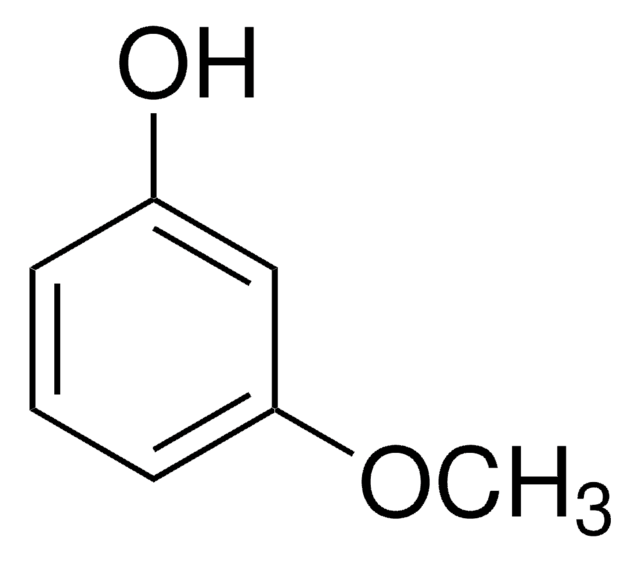All Photos(2)
About This Item
Linear Formula:
ClC6H3(OH)2
CAS Number:
Molecular Weight:
144.56
EC Number:
MDL number:
UNSPSC Code:
12352100
PubChem Substance ID:
NACRES:
NA.22
Recommended Products
Quality Level
Assay
97%
mp
90-94 °C (lit.)
functional group
chloro
SMILES string
Oc1ccc(Cl)cc1O
InChI
1S/C6H5ClO2/c7-4-1-2-5(8)6(9)3-4/h1-3,8-9H
InChI key
WWOBYPKUYODHDG-UHFFFAOYSA-N
Related Categories
General description
4-chlorocatechol was a major degradation product of 4-chloro-2-aminophenol (4C2AP). The degradation of 4-chlorocatechol was catalyzed by cphA-I enzyme.
Signal Word
Danger
Hazard Statements
Precautionary Statements
Hazard Classifications
Skin Corr. 1B
Storage Class Code
8A - Combustible corrosive hazardous materials
WGK
WGK 3
Flash Point(F)
Not applicable
Flash Point(C)
Not applicable
Personal Protective Equipment
dust mask type N95 (US), Eyeshields, Gloves
Choose from one of the most recent versions:
Already Own This Product?
Find documentation for the products that you have recently purchased in the Document Library.
Customers Also Viewed
Michael R L Stratford et al.
Chemical research in toxicology, 24(3), 350-356 (2011-02-11)
4-Fluoro-1,2-benzoquinone, generated by tyrosinase oxidation of 4-fluorocatechol in aqueous buffer, rapidly undergoes substitution by O-nucleophiles (water or catechols) with release of fluoride. 4-Chloro- and 4-bromocatechol behave similarly. The reactions, which have toxicological implications, have been monitored by spectrophotometry and HPLC/MS
A Farrell et al.
Journal of industrial microbiology & biotechnology, 28(6), 316-324 (2002-05-29)
A bacterium, CP1, identified as Pseudomonas putida strain, was investigated for its ability to grow on and degrade mono-chlorophenols and phenols as sole carbon sources in aerobic shaking batch culture. The organism degraded up to 1.56 mM 2- and 3-chlorophenol
Y Samet et al.
Journal of hazardous materials, 138(3), 614-619 (2006-07-18)
Electrochemical oxidation of 4-chloroguaiacol (4-CG) at Nb/PbO(2) anodes was studied under different experimental conditions such as initial concentration of substrate, electrolysis time, temperature and pH. We measured the concentrations of 4-chlorocatechol (4-CC), 2-methoxyhydroquinone (2-MHQ), maleic acid (MA) and carbon dioxide
X Guan et al.
Analytical chemistry, 72(11), 2423-2427 (2000-06-17)
A sensitive and selective sensing system for chlorocatechols (3-chlorocatechol and 4-chlorocatechol) was developed based on Pseudomonas putida bacteria harboring the plasmid pSMM50R-B'. In this plasmid, the regulatory protein of the clc operon, ClcR, controls the expression of the reporter enzyme
Ka Yee Lam et al.
Environmental science & technology, 54(1), 225-234 (2019-11-26)
Traditional constructed wetland designs typically result in variable efficiencies for trace organic contaminant removal. In this work, we used a Box-Behnken experimental design for optimizing the conditions of pH, nitrate concentration, and dissolved organic carbon (DOC) concentration that would maximize
Our team of scientists has experience in all areas of research including Life Science, Material Science, Chemical Synthesis, Chromatography, Analytical and many others.
Contact Technical Service












